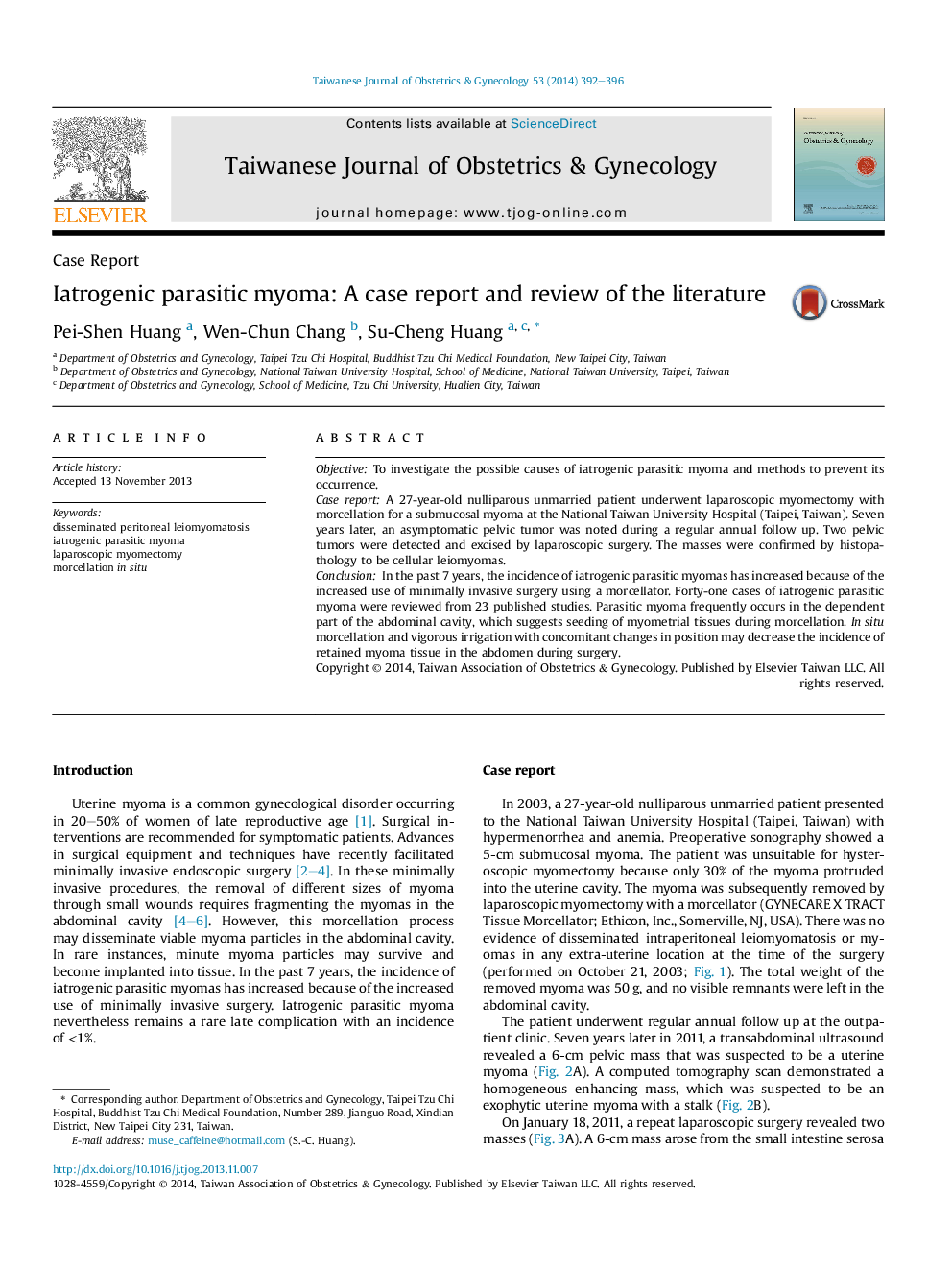| Article ID | Journal | Published Year | Pages | File Type |
|---|---|---|---|---|
| 3975213 | Taiwanese Journal of Obstetrics and Gynecology | 2014 | 5 Pages |
ObjectiveTo investigate the possible causes of iatrogenic parasitic myoma and methods to prevent its occurrence.Case reportA 27-year-old nulliparous unmarried patient underwent laparoscopic myomectomy with morcellation for a submucosal myoma at the National Taiwan University Hospital (Taipei, Taiwan). Seven years later, an asymptomatic pelvic tumor was noted during a regular annual follow up. Two pelvic tumors were detected and excised by laparoscopic surgery. The masses were confirmed by histopathology to be cellular leiomyomas.ConclusionIn the past 7 years, the incidence of iatrogenic parasitic myomas has increased because of the increased use of minimally invasive surgery using a morcellator. Forty-one cases of iatrogenic parasitic myoma were reviewed from 23 published studies. Parasitic myoma frequently occurs in the dependent part of the abdominal cavity, which suggests seeding of myometrial tissues during morcellation. In situ morcellation and vigorous irrigation with concomitant changes in position may decrease the incidence of retained myoma tissue in the abdomen during surgery.
